Earthships are self-contained living vessels that don’t rely on mains water or energy from big companies. Earthships use natural systems to provide all their own utilities — solar energy for heat and power, and rain for water — they heat and cool themselves, and use plants, both inside and outside, to treat ‘grey water (used water from bathroom sinks, showers, tubs, and washing machines (excluding water from the toilet).
Earthships
Earthship Brighton embodies five core elements of sustainable construction to create a building with outstanding ‘green’ credentials.
Use of low impact materials in construction — using local, recycled, waste, natural and renewable materials
Passive solar design — enjoying the sun’s free energy for space heating
Renewable energy — zero fossil fuel consumption for day-to-day running with on-site generation of power for electricity and water heating
Rainwater harvesting — free water from the skies with no mains connection and subsequent groundwater depletion
Using plants to treat waste water — no sewage infrastructure with on-site ‘waste water’ treatment using plants and natural processes.
Earthships have evolved over the last thirty years from the pioneering work of architect Michael Reynolds, Earthship Biotecture and the residents of the first three Earthship communities in Taos, New Mexico, USA.
Brighton Earthship
The internationally known earthship has delighted and educated thousands of visitors for over nine years but now the much loved eco-building needs to revamp its energy and water systems. The earthship was designed and built by the Low Carbon Trust in 2006 as a model low carbon community centre for courses and school visits.
One of Brighton’s most iconic buildings, the earthship was the first of its kind to be built in England and is one of only two earthships in the UK (the other is in Fife, Scotland). Stanmer Park, one of Brighton’s most visited green spaces, is home to the award-winning building.
Working as a demonstration site the earthship is not a home. It illustrates how — with smart design and careful planning — the buildings we live and occupy can have a low impact on the planet whilst being both beautiful and comfortable.
Some stats
-
some numbers pertaining to the earthship – http://www.lowcarbon.co.uk/earthship-brighton/earthship-brighton-by-numbers
-
average annual energy use in a UK house is 4115 kWh electricity and 14263 kWh gas – https://www.gov.uk/government/uploads/system/uploads/attachment_data/file/449134/ECUK_Chapter_3_-_Domestic_factsheet.pdf
-
earthships are designed to use a lot less than this and all energy is provided from onsite renewable energy, such as solar panels and wood stoves
-
over 27% of the UK’s carbon dioxide (CO2) emissions come from housing. 60% of energy at home was used for space heating and 15% for hot water. Therefore a large proportion of the UK carbon footprint comes from people heating their homes – https://www.cse.org.uk/projects/view/1112 and https://www.gov.uk/government/uploads/system/uploads/attachment_data/file/65599/6919-domestic-energy-use-study.pdf
-
the earthship reduces the amount of heating required through use of solar gains, thermal mass and high levels of insulation
-
50% of carbon emissions come from the UK’s built environment – https://connect.innovateuk.org/web/modernbuiltktn/public-reports1
-
“The UK produces around 55 million waste tyres a year. If not properly reused, recycled or disposed of, waste tyres can harm the environment and affect local communities, with fly tipping and fires.” – https://www.gov.uk/government/publications/2010-to-2015-government-policy-waste-and-recycling/2010-to-2015-government-policy-waste-and-recycling#appendix-8-disposing-of-tyres
-
each earthship uses around 1000 waste car tyres in it’s walls. Tyres are banned from landfill under the EU Landfill Directive, so finding innovative ways to reuse of them is vital – http://ec.europa.eu/environment/waste/landfill_index.htm
-
average daily water use in the UK is 150 litres per person. The earthship reduces this through low water use goods, e.g. taps, showers and toilets. All of this water then becomes waste water which is usually treated in a sewage plant. The earthship treats all of its waste water onsite using grey water planters and reed beds – http://www.waterwise.org.uk/data/resources/25/Water_factsheet_2012.pdf
-
construction waste stats here: http://www.ukgbc.org/resources/additional/key-statistics-construction-waste
-
The earthship reduces construction waste by using excavated earth in the rammed waste tyre walls. Lots of water materials, such as glass bottles, cans and reclaimed timber.
the Low Carbon Trust
Brighton based Low Carbon Trust is a not-for-profit organisation that was formed in 2001 to set up, manage, and promote environmental projects. Low Carbon Trust was established to increase awareness about the links between buildings that people live and work in, the carbon dioxide emissions that are produced by this and the resulting climate change.
The Low Carbon Trust does this by:
-
Running dozens of green building courses each year
-
Monthly Earthship Brighton tours
-
Running the popular Eco Education Days
-
Running the yearly Green Architecture Day: a weekend of talks by designers, practitioners & professionals run in partnership with Brighton Permaculture Trust
-
Promoting an ecological approach to architecture
the Upgrade
The Low Carbon Trust need to raise £20,000 to acquire a new ultraviolet water filtration system to purify rainwater for use inside the building, purchase new batteries to store electricity generated by the solar panels, and to build a straw bale unit to securely house the new batteries.
With these new systems in place the building will be able to host many more events and courses and open the building up to the local community to use it for their own projects and events whilst continuing to demonstrate cutting edge renewable technologies alongside elegant ecological building design.
the Appeal
The Low Carbon Trust is launching a crowdfunding campaign, Earthship Brighton: Plugged into Nature to upgrade its vital energy and water systems. The crowdfunding campaign launches on Tuesday 13th of October 2015 on Buzzbnk, the UK’s first crowdfunding platform and will last for 30 days only.
Buzzbnk is the UK’s first crowdfunding platform specifically for social enterprises and charities
To support the appeal, go here: https://www.buzzbnk.org/EarthshipBrighton

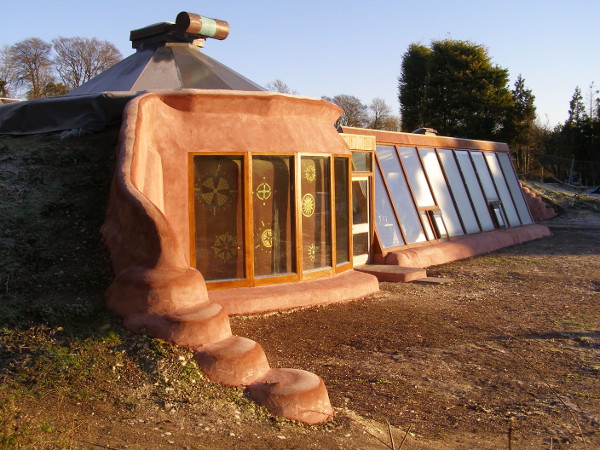
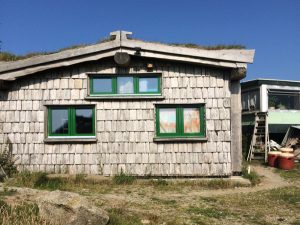

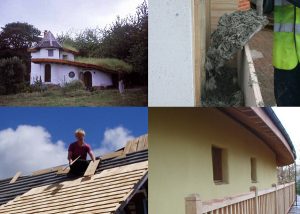
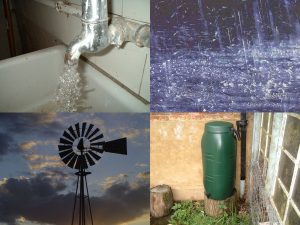

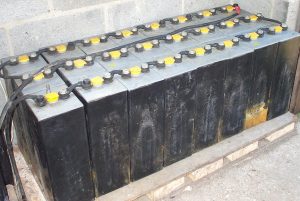
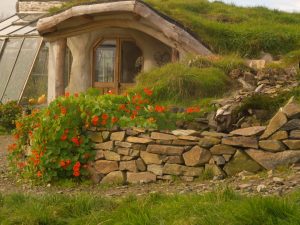

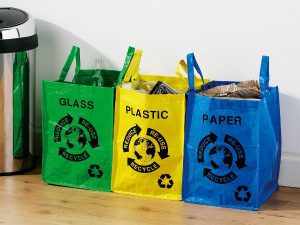
6 Comments
This is all very nice, but what do lowimpact.org think of the Earthship as a concept? In my view as a natural builder with 10 years’ experience (see http://www.abrazohouse.org), it’s massively over-hyped and has been sold as “the answer” to sustainable building, to people who don’t know what other options are out there. It’s the same thing that happened with the geodesic dome, and for the same reasons.
You might take a look at the following links to get a different view of the topic.
http://www.greenbuildingadvisor.com/blogs/dept/musings/earthship-hype-and-earthship-reality
http://thingsthatwindmeup.blogspot.com.es/2010/06/some-thoughts-on-earthships.html
http://www.permies.com/t/14444/earthship/Earthship-woes
Hi Robert,
Yes, we’ve heard about the attempted copyright (successful?) of the word ‘earthship’, which is why we don’t have an earthship topic on Lowimpact.org. We have earth-sheltered housing, and a whole range of other building techniques, but not earthships, for the above reason, and because an earthship is not really a type of natural home – but rather, it encompasses lots of other techniques and topics, like earth-shelters (although an earthship doesn’t have to be an earth-shelter), solar, wind, rainwater harvesting, compost loos etc. And we do have all those things as topics in their own right.
We’re wary of things that are touted as ‘the answer’, and we usually find that there will be a range of topics contributing to the best solution for a given location and budget.
Also, I think that the failure of a lot of low-impact living projects boils down to wanting to live an energy-hungry, consumer lifestyle, with TVs, dishwashers and flights – just in a natural home (usually a big one) with some renewable add-ons. I don’t think these things go together at all.
Hi Dave
I agree, there are a lot of ideas that are “bundled” in the Earthship concept. Many of which could be good ideas, if done right, others of which are probably bad ideas in most cases — one of the latter, in my view, is the key characteristic of Earthships, namely making walls by ramming hundreds of tyres full of earth. If you want an earth wall, you’d be better off just building an earth wall (rammed earth, compressed brick, cob or earthbag). But don’t expect an Earthship devotee to tell you that.
What I’m concerned about with a project like the Brighton Earthship is that it’s presenting a very one-sided and unbalanced (even, you might say, cultish) view of what sustainable building(s) should look like.
Re your other points, and how to judge the success or failure of a low-impact living project… Tiny house better than big house? It’s debatable. The bigger the house, the more floor area (and hence the more good stuff you can do) within a given cost (and a given area of building envelope). A big house that’s heated by the sun and firewood doesn’t generate any more CO2 during its occupation than a small one. Sure, tiny houses can be lovely, but try living in one with growing kids, house guests, your office, your partner’s yoga space and your home brew equipment… I’d say low-impact building is about building the right size for your needs, neither too big nor too small (and either way, making sure that it’s very efficient.)
Hand washing better than automatic dishwasher? Not necessarily — unless you’re very good at washing dishes by hand (http://is.gd/i3v3gi). I’m not, and while I appreciate the meditative aspect of it, it takes a lot of time, especially when you’ve got big groups of people… Personally I’d be in favour of using banana leaves as plates.
As for taking flights or not — what has that got to do with low-impact building? How can it have any bearing on which building techniques are the most appropriate to use in a give setting?
It’s all very well to say that flying is bad, but let’s say, hypothetically, that you have decided to leave a country (like, say, the UK) where planning laws are draconian and land outrageously expensive, in order to fulfill your dream of building your own low-impact home, and that (thanks to tax breaks and favourable regulations for aviation) flying is by far the most economical way of seeing friends and family back home… does this invalidate your way of life entirely?
Ha! Love the banana leaf idea.
A big house is fine for an extended family or a commune, but the more money people have, the bigger the house they tend to build. See this great letter by Art Ludwig of Oasis Design – http://lowimpactorg.wpengine.com/size-matters-why-a-big-house-cant-be-a-green-house/.
The hand-washing vs dishwasher debate is one I’d like to look into at some point, but I don’t think that the comparisons I’ve read take two things into consideration – first the materials and energy to make the dishwasher, and second, the fact that you have to give money to a multinational corporation to get one. (the article in the link didn’t mention either of those two things). But it did say that the average dishwasher cycle uses 6 gallons of water! There’s no way on earth that I’d use half that much to wash our dishes.
Flying and buildings – I think that usually, the most damaging aspect of a building, ecologically-speaking, is the lifestyle of the people who live in it. It’s no good having a super-eco house if you still want to consume lots and fly lots. That’s the gripe I always had with ‘Grand Designs’ – they usually had quite high-impact lifestyles, but had solar panels, so that’s ok then.
The problem with flying is that it’s so enormously damaging, and the biosphere doesn’t care whether your miles are love miles or a beach holiday in Goa – the damage is the same. Again, I’d say that a high-impact lifestyle negates the benefits of a low-impact home, .
One other excellent link about the pros and cons of earthships, and I’ll get off my hobby horse:
http://archinia.com/index.php/58-publications/publications/216-earthship-pros-and-cons